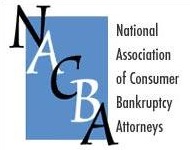I get a surprising number of questions about objecting to claims in a bankruptcy case: how? when?
Too few bankruptcy attorneys are asking “why?“
The answer to the “why” question must be that objecting to the claim furthers the client’s objectives or prevents a negative outcome.
Put another way, the cost of objecting must be relative to the benefit to be received. You must calculate how much your attorneys fees for the exercise will increase the cost of the case to your client. Will the client be money ahead if you object?
Who cares?
Let’s start with the situations where it makes no sense to object: the no-asset Chapter 7. If there is no distribution to be made, the court has no interest in resolving the dispute since it serves no bankruptcy purpose. There’s a real question as to whether a debtor even has standing in an insolvent estate.
Takeaway: if you need to resolve a dispute with a creditor, file a case under a reorganization chapter.
Second case where it makes no difference: the erroneous unsecured claim in a Chapter 13 with a pot plan. [ In the parlance where I practice, a pot plan is one in which the debtor commits to creating a pot of money of a specific size: $175/month for 36 months. The alternative is a percentage plan: unsecured creditors shall receive 15% of their allowed claims.]
In a pot plan, it generally makes no difference to the debtor how big a slice of the pie (or pot) each creditor gets. Knocking out a creditor doesn’t reduce the the amount the debtor has to pay to the plan. Knocking out a claim in a percentage plan saves the percentage of the amount of the claim as filed. Little claim, little gain. And vice versa.
Secured and priority claims do count
The calculation is different where the debtor is paying the claim in 100 cent dollars. Priority claims must be paid in full to get a full compliance discharge in Chapter 13. So an inflated tax or support claim costs your client real money. The ante goes up further if the dubious claim is a secured claim: now we’re talking real money with interest.
So, start by making sure the claims with the higher priority are correct. Your client gets a real bang for the buck when you reduce these claims.
This discussion of cost/benefit assumes that you are charging the client for your time in objecting to claims. If you aren’t, we need to have a further discussion about the importance of being paid fairly for your work, or you need to take the matter up with your judges.
But even if you practice where objecting to claims is expected to be done as part of the flat fee, we’re then talking about the cost to you versus the benefit to the client. If the objection is trivial, skip it. You don’t want to get a reputation with the bench as having no sense of proportion.
Another day, we’ll talk about claims objections “for the principle of the matter.”
More
The second life of an unchallenged claim
Image courtesy of RambergMediaImages.








